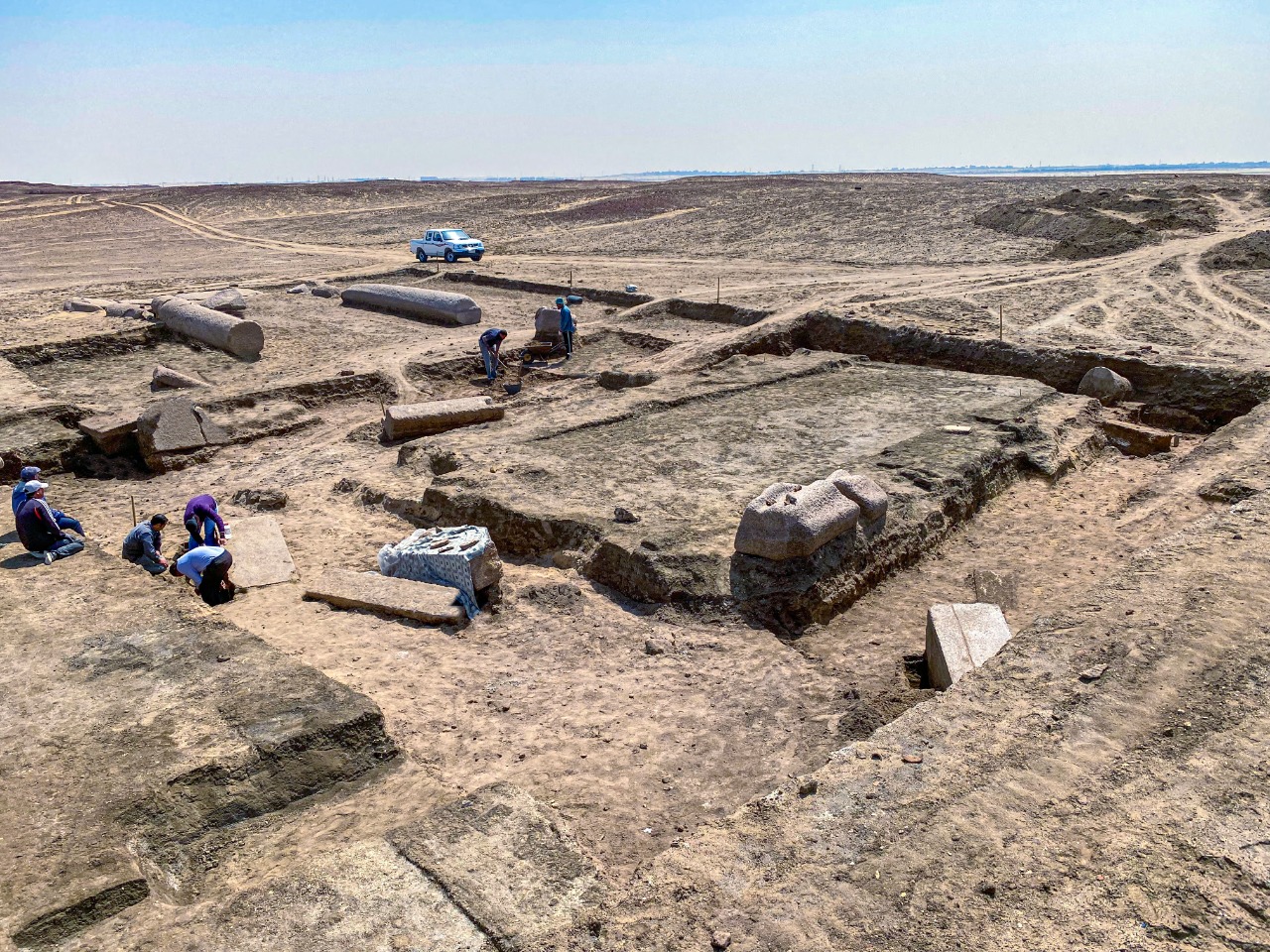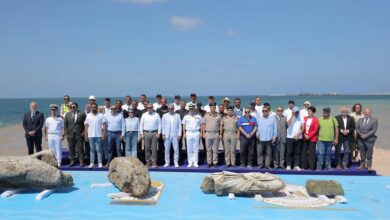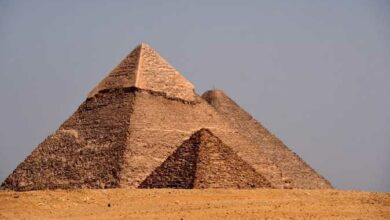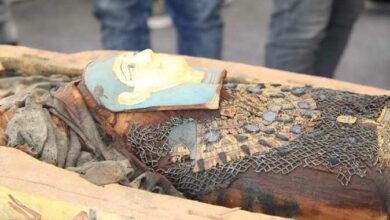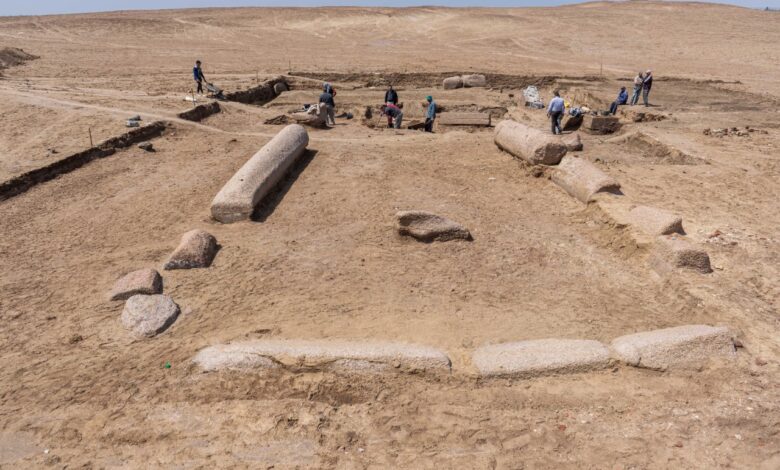
The Egyptian archaeological mission working at the site of Tal al-Farma in North Sinai archaeological area discovered the remains of a temple belonging to the god Zeus Cassius, according to a statement by the Ministry of Tourism and Antiquities.

The temple is located about 200 meters to the west of Pelusium Castle and 100 meters to the south of the memorial church on the site, Secretary General of the Supreme Council of Antiquities Mustafa al-Waziry said.
Waziry added that the location of the discovered temple was determined based on the presence of the remains of a huge gate on the surface of the earth that collapsed in the past due to a strong earthquake that struck the city.
The gate consisted of two pink granite columns, each approximately eight meters long and a meter thick, in addition to a granite lintel that was installed at the top of the gate.
The archaeological mission succeeded in revealing the remains of the temple for the first time.
It was built of mud bricks on a raised platform of rubble and broken stones, and its ceiling bears columns of pink granite said the head of the Egyptian Antiquities Sector at the Supreme Council of Antiquities, Ayman Ashmawy.
The entrance to the temple is located towards the east, and the ascent to it was via an ascending staircase covered with marble, he added, noting that in 1910 French archaeologist Jean Clédat discovered late Greek inscriptions on the lintel indicating the presence of the temple of Zeus Cassius in this place, but the temple was not found – until now.
Many huge stone blocks of pink granite were discovered lying in the streets surrounding the site of the temple, which likely suggests that the site was later exploited as a quarry and some parts were moved to be reused in building churches at Tal al-Farma – including the Corinthian column heads of Zeus Cassius Temple which was reused in the memorial church located north of the temple, the head of the Central Department of Antiquities of Lower Egypt Nadia Khedr explained.
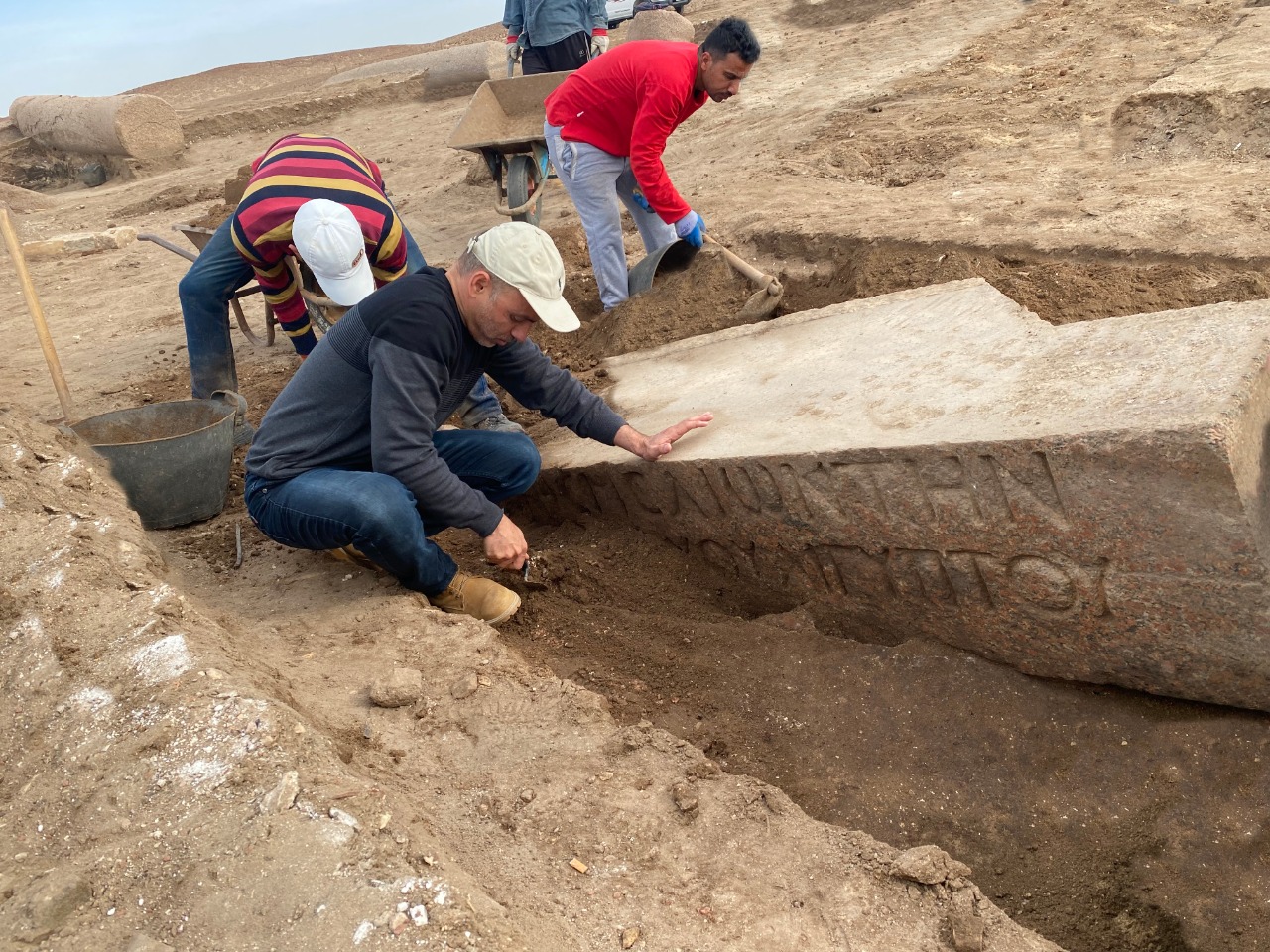
The Director General of Sinai Antiquities Hisham Hussein said that the discovered parts are now being studied, documented and photographed via photogrammetry to be reinstalled using modern technologies, which will help in recreating the architectural design closest to the original temple.
He added that the archaeological survey and the limited excavations that were carried out at the site during 1910 by Clédat were unsuccessful in uncovering the remains of the temple, but revealed a stone block of pink granite with an incomplete inscription in Greek.
Earlier this year, another stone block of pink granite with a sunken inscription in Greek was discovered.
Studying the two blocks, archaeologists found that the texts complemented each other, as the inscriptions indicate that Emperor Hadrian ordered new additions to the Temple of Zeus Cassius, and that ruler of Egypt at the time Titus Flavius Titianus was the one who made these additions.
